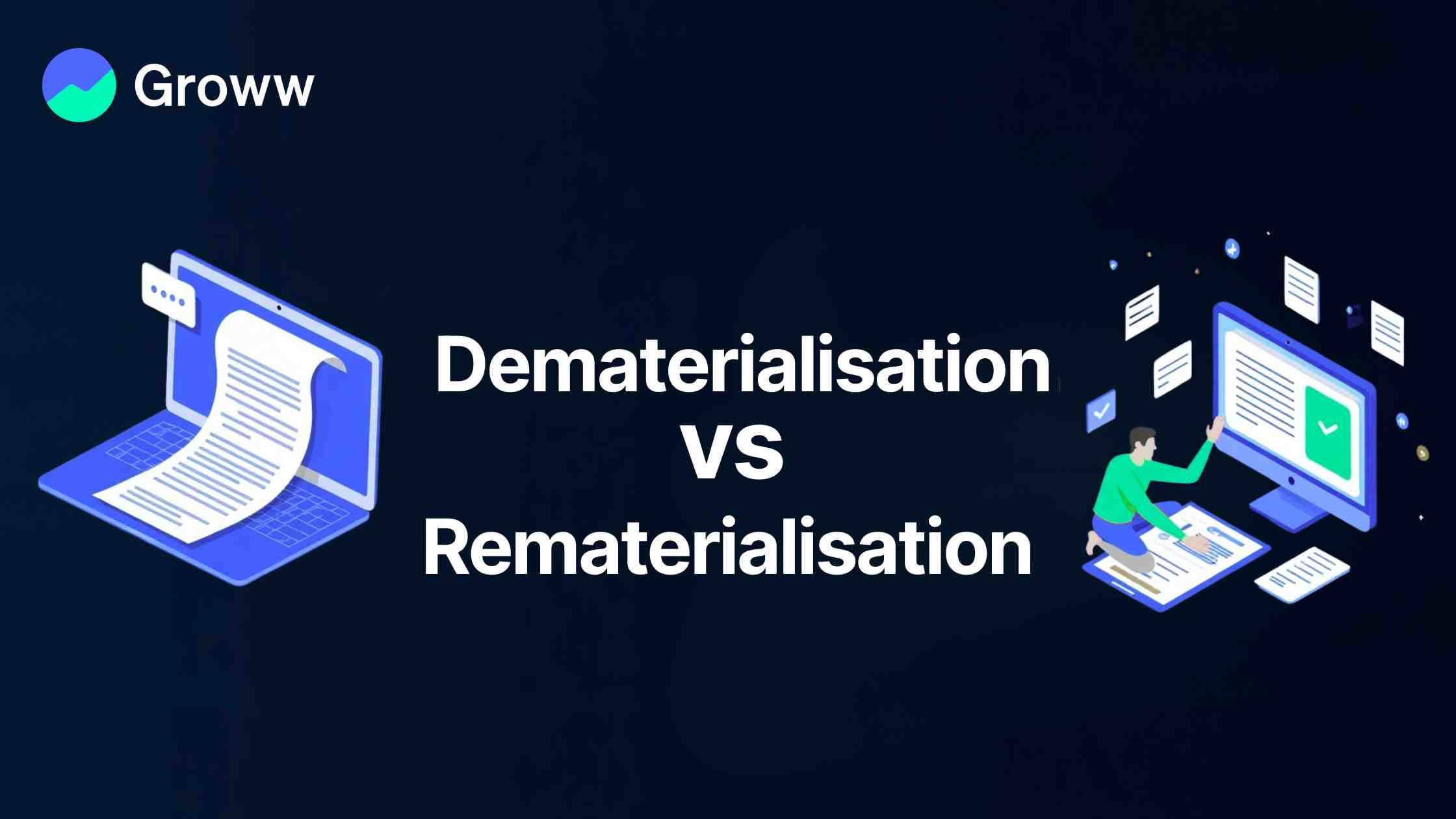Dematerialisation vs. Rematerialisation: Key Differences Explained

If you have invested or traded at any time in the past few years, you probably have a demat account. Demat accounts have helped the world transition from physical certificates to a secure and digital format in the case of securities. Along with dematerialisation, rematerialisation is also an important process that can be helpful in certain scenarios. In this blog, we will explore the differences between dematerialisation and rematerialisation. As an investor, it is helpful to understand how the two processes differ from each other.
What is Dematerialisation?
Dematerialisation refers to the process of converting physical shares and share certificates into a digital format. These shares are stored in your demat account, which is similar to a bank account for your investments. A demat account is required to trade or invest in shares. If an investor has shares in a physical format, they will need to dematerialise them to sell them. Once dematerialised, the physical shares are digitally credited to your demat account.
An investor can open a demat account with a depository participant (DP) like a bank, broker, or financial institution. A DP is linked with two of the main depositories in India: Central Depository Services Limited (CDSL) or the National Securities Depository Limited (NSDL). The depository is the central repository where the shares are stored in an electronic format. Whereas, the DP acts like a bridge connecting the investors to the depository.
What is Rematerialisation?
Rematerialisation refers to the process of converting shares that are held in electronic format back into a physical format. Through rematerialisation, an investor can get physical share certificates for the shares held in their demat account. Rematerialisation can be mandatory for certain securities, or an investor may opt to voluntarily rematerialise their holdings.
Key Differences between Dematerialisation and Rematerialisation
Here are the major factors that differentiate dematerialisation and rematerialisation.
|
Dematerialisation |
Rematerialisation |
|
It is the process of converting physical shares into a digital and electronic format. |
It is the process of converting shares held digitally into physical share certificates. |
|
Transactions take place digitally. |
Transactions take place physically after conversion to physical shares. |
|
Demat accounts have an annual account maintenance charge. |
No maintenance charges for physical shares.
|
|
The process of dematerialisation is easy and convenient. |
The rematerialisation process is complex and time-consuming. |
|
Dematerialisation offers more security while trading and investing. |
Rematerialisation increases the risks as shares are held physically. |
Process of Dematerialisation
Now that we have understood the difference between dematerialisation and rematerialisation, let’s understand the process of dematerialisation in greater detail.
- First, you need to open a demat account.
- Fill in the dematerialisation request form (DRF) and submit it to the DP along with the physical share certificates.
- The DP forwards the share certificates and dematerialisation request to the depository, transfer agents, and registrars.
- Once the dematerialisation process begins, the original share certificates are no longer valid.
- Upon successful verification and completion of the dematerialisation process, the depository notifies the DP that the process is complete.
- The converted shares are digitally credited to your demat account within 15 to 30 days.
Process of Rematerialisation
To rematerialise digital shares into physical share certificates, an investor needs to follow the following steps.
- Obtain a rematerialisation request form (RRF) from the depository participant.
- Submit the duly filled RRF to the DP. The request is then moved forward to the depository and the registrar.
- The registrar prints the share certificates after confirming the request with the depository participant.
- After the share certificates are printed and verified, they are sent over to the investor. The entire process can take over 30 days to complete.
Why Investors Might Choose Rematerialisation?
Although rematerialisation is a complex process and increases the risks of holding shares, there are several reasons why an investor might choose this option. Rematerialisation offers investors more flexibility, allowing them to hold physical shares if they prefer. By holding shares in a physical format, an investor can also avoid paying account maintenance charges for a demat account.
Conclusion
Dematerialisation has become a crucial aspect of investing and trading in today’s world. However, investors might prefer to possess physical share certificates. Having an understanding of dematerialisation and rematerialisation can help investors assess the pros and cons of each option and convert their shares as per their preference.